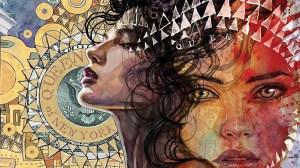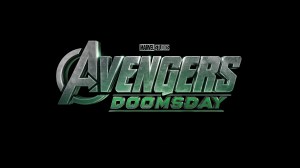For nearly four decades, The Legend of Zelda has remained one of Nintendo’s greatest series and a crown jewel in the industry. But this wasn’t always the case. Today, the series is known for adventure, innovation, and imagination. From Ocarina of Time’s groundbreaking 3D world to Breath of the Wild’s open-world reinvention, each title has pushed the series further into the spotlight. Yet even in a series with so much light, there exists a dark and often forgotten chapter. The Legend of Zelda series contains several games that fans and Nintendo want absolutely nothing to do with.
Videos by ComicBook.com
In the early 1990s, Nintendo had an unusual licensing deal that led to something that haunts fans today. During a time of shifting technology, Nintendo allowed another company to develop several Zelda games: the results were disastrous. These games fell so far below Nintendo’s standards that they are not included in the official The Legend of Zelda: Hyrule Historia. To this day, most Zelda fans have never heard of The Faces of Evil, The Wand of Gamelon, and Zelda’s Adventure.
Nintendo Disastrous Partnership With Phillips Interactive Media

The Legend of Zelda’s worst chapter begins with a deal between Nintendo and Phillips Interactive Media, who developed the CD-i alongside Sony. Nintendo was exploring options for an add-on to the Super Nintendo Entertainment System to expand its library of already classic games, such as Final Fantasy VI and Super Mario RPG, and more. The deal would eventually fall through, though Phillips would retain limited rights to use certain Nintendo characters like Link, and made a bold choice to do so on its own console, the CD-i.
Eager to capitalize on the recognizable names of The Legend of Zelda, Phillips outsourced development to Animation Magic and Viridis Corporation, two small third-party developers. These studios were given a limited budget, minimal guidance, and tight deadlines. While each had access to Nintendo’s characters, they received no help or input from Nintendo itself. This forced it to bear the weight of the expectation the series carried, and both Animation Magic and Viridis ultimately couldn’t handle it.
The developers tried to emulate the feel of classic Nintendo titles, but lacked the experience to do so. The studio was comprised of small teams working with early tools more suited for developing educational software rather than video games. The results were something that felt so disconnected from The Legend of Zelda, feeling almost like off-brand imitations rather than actual games in the series.
A Departure in Story and Gameplay

The games were ambitious from the beginning. They introduced animated cutscenes, voiced dialogue, and a new perspective. At the time, these were innovative concepts. But they were also completely opposite of The Legend of Zelda. Animation Magic and Viridis wanted to capitalize on the expanded CD format’s ability to store large video and audio files. Unfortunately, these promising ambitions fell apart upon execution.
Gameplay was cumbersome and unintuitive. Controls were stiff and unresponsive to the point where simple actions like jumping and attacking were frustrating. The levels were poorly designed and deviated from the tight, purposeful exploration that was one of the defining features of the Zelda series. These were disjointed with confusing objectives and enemies that spawned erratically. This was all only made worse by the shift from the series’ top-down perspective to a 2D one. The exception is Zelda’s Adventure, but even keeping the top-down view couldn’t save this project.
Sadly, the story wasn’t any better. Animation Magic and Viridis attempted to capture the charm of Nintendo’s games and went a step further with hand-drawn animation and voiced cutscenes. The results were surreal. Characters spoke in exaggerated tones through dialogue that was more fitting for a comedy than a heroic fantasy. The animation was unpolished and inconsistent with clashing styles. The entire production was laughable made all the more worse by plotlines too similar to the original series.
The Legend of Zelda’s Forgotten and Failed Chapter

Where mainline Zelda games inspired a sense of awe and adventure, the CD-i games evoked confusion, frustration, and disappointment. Broken mechanics, awkward dialogue, and bizarre aesthetics completely clashed with the rest of the series. Reviews were brutal, and now the games have become internet memes like the classic “Well, excuse me, princess” line from The Legend of Zelda animation. Over time, they’ve taken on a cult status by those few who remember them, which isn’t a lot of Zelda fans.
Aside from the developer’s inexperience and odd choices, it was largely the CD-i’s hardware that failed The Legend of Zelda. It was simply ill-equipped to handle a game of this scope because of its limited processing power. This resulted in sluggish performance, long load times, and constantly interrupted gameplay that barely functioned when it ran. Combining these factors shows how far off the mark these games were from Nintendo’s design philosophy of precision and player discovery.
Today, Nintendo and most fans treat these games as little more than a historical footnote, an experiment that shouldn’t have happened. They don’t exist in the timeline, something that includes the likes of Four Swords and Tri-Force Heroes, some of the worst Zelda games in the series. This shows how much the CD-i games lacked the heart and soul of the series. But looking back, one positive that can be said is how this brief history showcased how special the The Legend of Zelda series is.
What do you think? Leave a comment below and join the conversation now in the ComicBook Forum!









